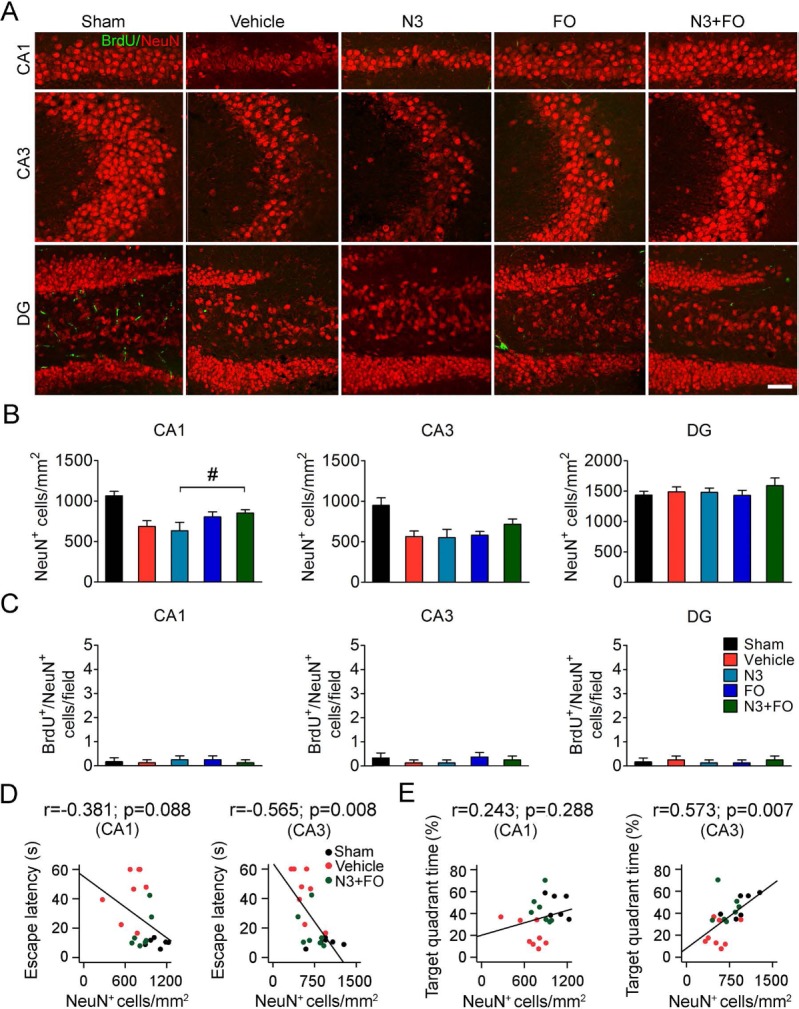Figure 2.

Post-TBI n-3 PUFA treatment does not improve hippocampal integrity. (A) Representative images showing double-label immunofluorescence of 5-bromo-2′-deoxyuridine (BrdU) and NeuN in the CA1, CA3, and dentate gyrus (DG) of the ipsilesional hippocampus at 35 days after traumatic brain injury (TBI). Scale bar: 50 μm. (B) Quantification of total surviving neurons (NeuN+ cells) in the ipsilesional CA1, CA3, and DG. (C) Quantification of newly generated mature neurons (BrdU+/NeuN+ cells) in the ipsilesional CA1, CA3, and DG. Barely any newly generated mature neurons were present in all regions of the hippocampus in all groups. #p ≤ 0.05, N3 + FO (fatty acid injection and fish oil dietary supplementation) versus N3 by one-way analysis of variance (ANOVA). (D, E) Pearson correlation between the mice's spatial learning (D) and memory (E) performance in the Morris water maze and the numbers of total viable neurons in the ipsilesional CA1 and CA3. n = 6 mice for sham group; n = 8 mice for vehicle, N3, and FO groups; n = 7 mice for N3 + FO group.
